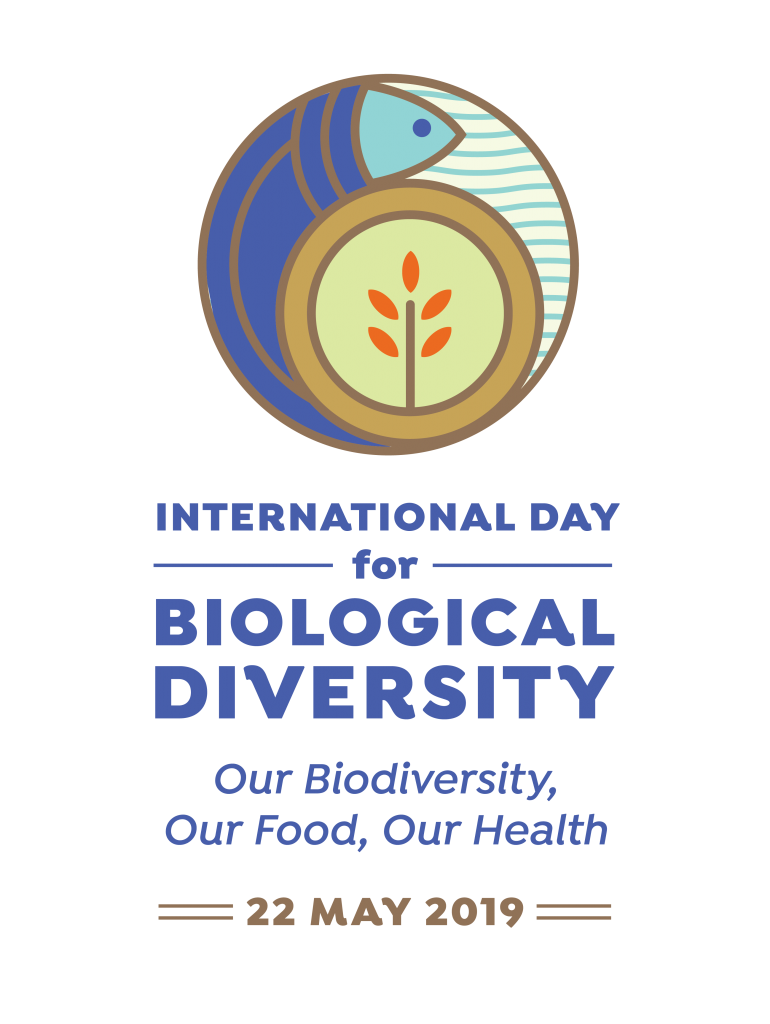 Some history
Some history
The United Nations has proclaimed May 22 The International Day for Biological Diversity (IDB) to increase understanding and awareness of biodiversity issues. When first created by the Second Committee of the UN General Assembly in late 1993, 29 December (the date of entry into force of the Convention of Biological Diversity), was designated The International Day for Biological Diversity. In December 2000, the UN General Assembly adopted 22 May as IDB, to commemorate the adoption of the text of the Convention on 22 May 1992 by the Nairobi Final Act of the Conference for the Adoption of the Agreed Text of the Convention on Biological Diversity. This was partly done because it was difficult for many countries to plan and carry out suitable celebrations for the date of 29 December, given the number of holidays that coincide around that time of year.
How we celebrate this day in 2019
This year, by decision of the Secretariat of the UN Convention on Biological Diversity, the theme of this day “Our biodiversity, Our food, Our health”!
“From individual species through entire ecosystems, biological diversity is vital for human health and well-being. The quality of the water we drink, the food we eat and the air we breathe all depend on keeping the natural world in good health. We need healthy ecosystems to achieve the Sustainable Development Goals and to address climate change: they can provide 37 per cent of the mitigation needed to limit global temperature rise.”
- António Guterres, United Nations Secretary-General
https://www.cbd.int/idb/image/2019/messages/idb-2019-message-unsg-en.pdf
Biodiversity and climate change
The assessment, spearheaded by the Intergovernmental Science-Policy Platform on Biodiversity and Ecosystem Services (IPBES), has shown the strong interrelationship between climate change, the loss of biodiversity and human wellbeing. Climate change has been identified as a primary driver of biodiversity loss, already altering every part of nature. Likewise, the loss of biodiversity contributes to climate change, for example when we destroy forests we emit carbon dioxide, the major “human-produced” greenhouse gas.
“We have entered an era of rapidly accelerating species extinction, and are facing the irreversible loss of plant and animal species, habitats and vital crops, while coming face to face with the horrific impacts of global climate change.” – says Sir Robert Watson, chair of the Intergovernmental Science-Policy Platform on Biodiversity and Ecosystem Services (IPBES), and former chair of the Intergovernmental Panel on Climate Change (IPCC) in his recent article for the Guardian. He states: “We cannot solve the threats of human-induced climate change and loss of biodiversity in isolation. We either solve both or we solve neither.”
Kyrgyzstan: how climate change is already affecting biodiversity
The Sixth National Report of the Kyrgyz Republic for the UN Convention on Biological Diversity, published in 2018, stated that climate change will affect all forest ecosystems and biodiversity of Kyrgyzstan. Projected climate changes will seriously affect the ability of forests and biodiversity to adapt and conserve.
It is assumed that as a result of increased temperature, changes in water availability and projected double carbon dioxide levels, changes in forests and biodiversity can occur at two levels: structural (physiology and metabolism of trees and animals) and ecosystem functioning.
Additional information
According to Conservation International Kyrgyzstan is one of 34 global "centers of biodiversity” and one of the 200 priority ecoregions of the planet according to WWFs Global. In Kyrgyzstan, there are three wetlands of world importance under the Ramsar Convention: Issyk-Kul, Son-Kul and Chatyr-Kul. 11 important ornithological territories (IBA) and two objects included in the UNESCO program as international biosphere territories - the Issyk-Kul Biosphere Territory and the Sary-Chelek National Reserve.
Taking into account that the area of Kyrgyzstan occupies only 0.03% of the area of the planet, or 0.13% of the land area, about 2% of species of world flora grow and more than 3% of species of world fauna inhabited in this country. This is quite a lot. Currently, about 100 forms of viruses and 200 bacteria, more than 2 thousand species of fungi, more than 1 thousand species of algae, more than 450 species of mosses, more than 180 species of lichens and about 50 species of other lower plants, from vascular plants, are known in Kyrgyzstan. 18 species of gymnosperms, more than 3,900 species of angiosperms. Known from the animal kingdom: about 100 species of protozoa, more than 1600 species of worms, mollusks more than 160 species, crustaceans about 100 species and dozens of species of other invertebrates, except for arthropods. More than 10 thousand insect species, more than 1 thousand arachnid species, several dozen other arthropod species are known from arthropods. Of the vertebrates, 62 species of fish, 4 species of amphibians, 34 species of reptiles, 395 species of birds, 87 species of mammals are known. The fauna and flora have not yet been fully investigated and new discoveries are coming.
Source: UNCBD web-resource: (www.cbd.int ); Own information from Internet sources.
______________________
Climate Adaptation and Mitigation Program for Aral Sea Basin (CAMP4ASB)
![]()